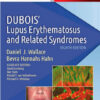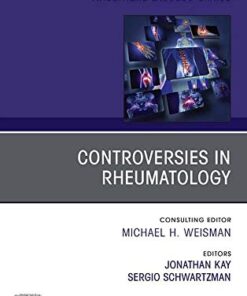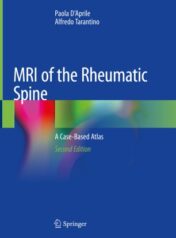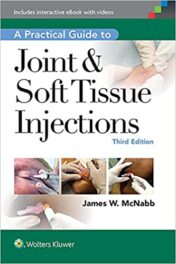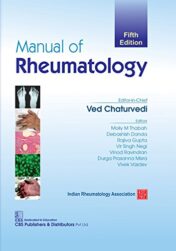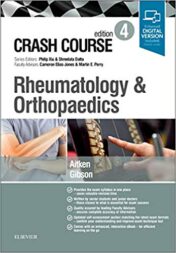- File Size: 4141 KB
- Print Length: 268 pages
- Simultaneous Device Usage: Up to 4 simultaneous devices, per publisher limits
- Publisher: Churchill Livingstone; 4 edition (October 24, 2011)
- Publication Date: October 24, 2011
- Language: English
- Type :Original PDF
- ==========================+======================
-
Note : We will send ebook download link after confirmation of payment via paypal success . Payment Visa or master card
Contact Email : [email protected]
Injection Techniques in Musculoskeletal Medicine: A Practical Manual for Clinicians in Primary and Secondary Care Kindle Edition
$10
- Illustrations, references, lesions, drugs, controversies!
- Chapters on Other Injectable Substances; Landmark and Image Guided Injections
- Latest evidence in injection therapy literature
- Adapted and simplified practical sections
- Access to Musculoskeletal Injection Techniques Trainer – a virtual aid to test your anatomical and technical skills on the top most common injections for the upper and lower limbs and spine – perfect for self-testing and honing your skills!
- Log on to www.injectiontechniquesonline.com to begin
- The Trainer also gives unlimited access to a bank of over 50 video clips demonstrating actual needle insertion for each lesion
-
Product Details
Injection Techniques in Musculoskeletal Medicine: A Practical Manual for Clinicians in Primary and Secondary CareKindle Edition
by Stephanie Saunders (Author), Steve Longworth (Author)
Now in its fourth edition and with a new title – Injection Techniques in Musculoskeletal Medicine – this successful step-by-step guide is a trusted resource used by a wide range of practitioners who have to deal with the management of painful joints and soft tissues, particularly in relation to sports and overuse injuries.
Area by area, guidance is given for each lesion on appropriate patient selection and delivery of the drug. Every technique has its own two-page spread containing a written description along with an anatomical illustration of the region and a photograph showing the anatomical landmarks for the injection.
This new edition is now accompanied by a Trainer available viawww.injectiontechniquesonline.com. Please see log on for further details on how to access the virtual training guide – introduced by Stephanie Saunders herself – which covers the top most common injection techniques for each of the body regions. Through key text, videos, animations and interactive self-assessment, users are tested on their knowledge of anatomical landmarks, differential diagnoses, assessment criteria, drug selection and technical skill. Further access is given to a library of over 50 video clips showing supplementary injection techniques which clearly demonstrate the correct anatomical position for each needle insertion.
Related Products
MUSCULOSKELETAL MEDICINE & RHEUMATOLOGY BOOKS
MUSCULOSKELETAL MEDICINE & RHEUMATOLOGY BOOKS
MUSCULOSKELETAL MEDICINE & RHEUMATOLOGY BOOKS
MUSCULOSKELETAL MEDICINE & RHEUMATOLOGY BOOKS
MUSCULOSKELETAL MEDICINE & RHEUMATOLOGY BOOKS
MUSCULOSKELETAL MEDICINE & RHEUMATOLOGY BOOKS
MUSCULOSKELETAL MEDICINE & RHEUMATOLOGY BOOKS
MUSCULOSKELETAL MEDICINE & RHEUMATOLOGY BOOKS
MUSCULOSKELETAL MEDICINE & RHEUMATOLOGY BOOKS
MUSCULOSKELETAL MEDICINE & RHEUMATOLOGY BOOKS
MUSCULOSKELETAL MEDICINE & RHEUMATOLOGY BOOKS
MUSCULOSKELETAL MEDICINE & RHEUMATOLOGY BOOKS
Firestein y Kelley. Tratado de reumatología,11 edición, 2 Volume Set (Original PDF from Publisher)
MUSCULOSKELETAL MEDICINE & RHEUMATOLOGY BOOKS
Manual of Lab Investigations in Rheumatic Diseases (Original PDF from Publisher)
MUSCULOSKELETAL MEDICINE & RHEUMATOLOGY BOOKS
MUSCULOSKELETAL MEDICINE & RHEUMATOLOGY BOOKS
MUSCULOSKELETAL MEDICINE & RHEUMATOLOGY BOOKS
MUSCULOSKELETAL MEDICINE & RHEUMATOLOGY BOOKS
MUSCULOSKELETAL MEDICINE & RHEUMATOLOGY BOOKS
MUSCULOSKELETAL MEDICINE & RHEUMATOLOGY BOOKS
MUSCULOSKELETAL MEDICINE & RHEUMATOLOGY BOOKS
Clinical Innovation in Rheumatology: Past, Present, and Future 2022 Original PDF
MUSCULOSKELETAL MEDICINE & RHEUMATOLOGY BOOKS
A Clinician’s Pearls & Myths in Rheumatology 2016 Original PDF
MUSCULOSKELETAL MEDICINE & RHEUMATOLOGY BOOKS
Synovial Fluid Analysis and The Evaluation of Patients With Arthritis 2022 Original pdf
MUSCULOSKELETAL MEDICINE & RHEUMATOLOGY BOOKS
MUSCULOSKELETAL MEDICINE & RHEUMATOLOGY BOOKS
Multimodal Management of Upper and Lower Extremity Lymphedema 2022 Original pdf+videos
MUSCULOSKELETAL MEDICINE & RHEUMATOLOGY BOOKS
Handbook of Biologics for Rheumatological Disorders 2022 Original PDF
MUSCULOSKELETAL MEDICINE & RHEUMATOLOGY BOOKS
MUSCULOSKELETAL MEDICINE & RHEUMATOLOGY BOOKS
Firestein y Kelley. Tratado de reumatología (Spanish Edition) 2022 True PDF
MUSCULOSKELETAL MEDICINE & RHEUMATOLOGY BOOKS
Riabilitazione integrata patologie reumatiche. Approccio integrato 2016 EPUB & converted pdf
MUSCULOSKELETAL MEDICINE & RHEUMATOLOGY BOOKS
MUSCULOSKELETAL MEDICINE & RHEUMATOLOGY BOOKS
MUSCULOSKELETAL MEDICINE & RHEUMATOLOGY BOOKS
MUSCULOSKELETAL MEDICINE & RHEUMATOLOGY BOOKS
Rheumatology for Primary Care Providers: A Clinical Casebook (Casebooks Series) 2022 43Original PDF
MUSCULOSKELETAL MEDICINE & RHEUMATOLOGY BOOKS
Annals of the Rheumatic Diseases 2021 Full Archives True PDF
MUSCULOSKELETAL MEDICINE & RHEUMATOLOGY BOOKS
MUSCULOSKELETAL MEDICINE & RHEUMATOLOGY BOOKS
MUSCULOSKELETAL MEDICINE & RHEUMATOLOGY BOOKS
Osteoporosis Treatment A Clinical Overview 2021 Original pdf
MUSCULOSKELETAL MEDICINE & RHEUMATOLOGY BOOKS
Ultrasound in Rheumatology A Practical Guide for Diagnosis 2021 Original pdf
MUSCULOSKELETAL MEDICINE & RHEUMATOLOGY BOOKS
Rheumatic Disease in Geriatrics Diagnosis and Management 2020 Original pdf
MUSCULOSKELETAL MEDICINE & RHEUMATOLOGY BOOKS
OPLL Ossification of the Posterior Longitudinal Ligament 2020 Original pdf
MUSCULOSKELETAL MEDICINE & RHEUMATOLOGY BOOKS
PET/CT for Inflammatory Diseases Basic Sciences, Typical Cases, and Review 2020 Original pdf
MUSCULOSKELETAL MEDICINE & RHEUMATOLOGY BOOKS
Comprehensive Treatment of Knee Osteoarthritis Recent Advances 2020 Original pdf
MUSCULOSKELETAL MEDICINE & RHEUMATOLOGY BOOKS
MUSCULOSKELETAL MEDICINE & RHEUMATOLOGY BOOKS
MRI of the Rheumatic Spine A Case-Based Atlas 2020 Original pdf
MUSCULOSKELETAL MEDICINE & RHEUMATOLOGY BOOKS
MUSCULOSKELETAL MEDICINE & RHEUMATOLOGY BOOKS
Sarcopenia Research and Clinical Implications 2021 Original pdf
MUSCULOSKELETAL MEDICINE & RHEUMATOLOGY BOOKS
Nursing Older People with Arthritis and other Rheumatological Conditions 2020 Original pdf
MUSCULOSKELETAL MEDICINE & RHEUMATOLOGY BOOKS
A Case-Based Guide to Neuromuscular Pathology 2020 ORIGINAL PDF
MUSCULOSKELETAL MEDICINE & RHEUMATOLOGY BOOKS
Precision Anticoagulation Medicine A Practical Guide 2020 ORIGINAL PDF
MUSCULOSKELETAL MEDICINE & RHEUMATOLOGY BOOKS
MUSCULOSKELETAL MEDICINE & RHEUMATOLOGY BOOKS
MUSCULOSKELETAL MEDICINE & RHEUMATOLOGY BOOKS
MUSCULOSKELETAL MEDICINE & RHEUMATOLOGY BOOKS
MUSCULOSKELETAL MEDICINE & RHEUMATOLOGY BOOKS
The Washington Manual Rheumatology Subspecialty Consult, 3rd Edition Original PDF 2020
MUSCULOSKELETAL MEDICINE & RHEUMATOLOGY BOOKS
MUSCULOSKELETAL MEDICINE & RHEUMATOLOGY BOOKS
The Pediatric Foot and Ankle: Diagnosis and Management (Original PDF)
MUSCULOSKELETAL MEDICINE & RHEUMATOLOGY BOOKS
MUSCULOSKELETAL MEDICINE & RHEUMATOLOGY BOOKS
A Practical Guide to Joint & Soft Tissue Injection, 4th edition ePub3+Converted PDF 2021
MUSCULOSKELETAL MEDICINE & RHEUMATOLOGY BOOKS
Textbook of Pediatric Rheumatology, 8th edition (Original PDF)
MUSCULOSKELETAL MEDICINE & RHEUMATOLOGY BOOKS
MUSCULOSKELETAL MEDICINE & RHEUMATOLOGY BOOKS
MUSCULOSKELETAL MEDICINE & RHEUMATOLOGY BOOKS
Current Diagnosis & Treatment in Rheumatology, Fourth Edition (Original PDF)
MUSCULOSKELETAL MEDICINE & RHEUMATOLOGY BOOKS
MUSCULOSKELETAL MEDICINE & RHEUMATOLOGY BOOKS
MUSCULOSKELETAL MEDICINE & RHEUMATOLOGY BOOKS
MUSCULOSKELETAL MEDICINE & RHEUMATOLOGY BOOKS
MUSCULOSKELETAL MEDICINE & RHEUMATOLOGY BOOKS
Management of Bone Disease and Kidney Failure in Multiple Myeloma: A Pocket Guide (Original PDF)
MUSCULOSKELETAL MEDICINE & RHEUMATOLOGY BOOKS
MUSCULOSKELETAL MEDICINE & RHEUMATOLOGY BOOKS
MUSCULOSKELETAL MEDICINE & RHEUMATOLOGY BOOKS
MUSCULOSKELETAL MEDICINE & RHEUMATOLOGY BOOKS
MUSCULOSKELETAL MEDICINE & RHEUMATOLOGY BOOKS
MUSCULOSKELETAL MEDICINE & RHEUMATOLOGY BOOKS
MUSCULOSKELETAL MEDICINE & RHEUMATOLOGY BOOKS
Oxford Textbook of Rheumatology (Oxford Textbook Series), 4th Edition (Updated chapters – May 2019)
MUSCULOSKELETAL MEDICINE & RHEUMATOLOGY BOOKS
MUSCULOSKELETAL MEDICINE & RHEUMATOLOGY BOOKS
MUSCULOSKELETAL MEDICINE & RHEUMATOLOGY BOOKS
Rheumatology Entrance MCQ – NEET SS, NEET PG, JIPMER, DM Entrance (PDF)
MUSCULOSKELETAL MEDICINE & RHEUMATOLOGY BOOKS
MUSCULOSKELETAL MEDICINE & RHEUMATOLOGY BOOKS
MUSCULOSKELETAL MEDICINE & RHEUMATOLOGY BOOKS
MUSCULOSKELETAL MEDICINE & RHEUMATOLOGY BOOKS
Textbook of Pediatric Rheumatology, 8th Edition (True PDF + ToC+ Index)
MUSCULOSKELETAL MEDICINE & RHEUMATOLOGY BOOKS
Atlas of Ulcers in Systemic Sclerosis: Diagnosis and Management
MUSCULOSKELETAL MEDICINE & RHEUMATOLOGY BOOKS
Crash Course Rheumatology and Orthopaedics, 4e (ORIGINAL PDF)
MUSCULOSKELETAL MEDICINE & RHEUMATOLOGY BOOKS
MUSCULOSKELETAL MEDICINE & RHEUMATOLOGY BOOKS
MUSCULOSKELETAL MEDICINE & RHEUMATOLOGY BOOKS
Firestein & Kelley’s Textbook of Rheumatology, 2-Volume Set, 11th Edition (Original PDF)
MUSCULOSKELETAL MEDICINE & RHEUMATOLOGY BOOKS
MUSCULOSKELETAL MEDICINE & RHEUMATOLOGY BOOKS
MUSCULOSKELETAL MEDICINE & RHEUMATOLOGY BOOKS
MUSCULOSKELETAL MEDICINE & RHEUMATOLOGY BOOKS
MUSCULOSKELETAL MEDICINE & RHEUMATOLOGY BOOKS
Oxford Textbook of Psoriatic Arthritis (Oxford Textbooks in Rheumatology) (PDF)
MUSCULOSKELETAL MEDICINE & RHEUMATOLOGY BOOKS
MUSCULOSKELETAL MEDICINE & RHEUMATOLOGY BOOKS
MUSCULOSKELETAL MEDICINE & RHEUMATOLOGY BOOKS
MUSCULOSKELETAL MEDICINE & RHEUMATOLOGY BOOKS
Multiple Sclerosis: Tips and Strategies for Making Life Easier, Third Edition (PDF)
MUSCULOSKELETAL MEDICINE & RHEUMATOLOGY BOOKS
Paediatric Rheumatology (Oxford Specialist Handbooks in Paediatrics) (PDF)
MUSCULOSKELETAL MEDICINE & RHEUMATOLOGY BOOKS
MUSCULOSKELETAL MEDICINE & RHEUMATOLOGY BOOKS


